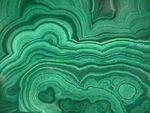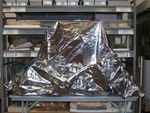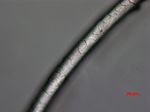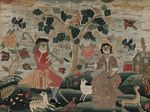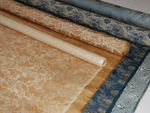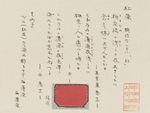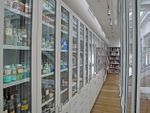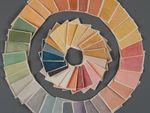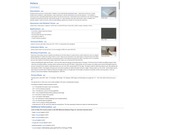Difference between revisions of "Main Page"
| Line 1: | Line 1: | ||
| − | |||
=Conservation & Art Materials Encyclopedia Online= | =Conservation & Art Materials Encyclopedia Online= | ||
| − | |||
| − | |||
| − | |||
| − | |||
| − | |||
| − | |||
| − | |||
The '''Conservation and Art Materials Encyclopedia Online (CAMEO)''' is a database that compiles, defines, and disseminates technical information on the distinct collection of terms, materials, and techniques used in the fields of art conservation and historic preservation. First developed as a materials database in 1997 at the Museum of Fine Arts, Boston it has expanded with the cooperation of multiple institutions to include several reference collections. Learn more about [[About CAMEO|CAMEO]]. | The '''Conservation and Art Materials Encyclopedia Online (CAMEO)''' is a database that compiles, defines, and disseminates technical information on the distinct collection of terms, materials, and techniques used in the fields of art conservation and historic preservation. First developed as a materials database in 1997 at the Museum of Fine Arts, Boston it has expanded with the cooperation of multiple institutions to include several reference collections. Learn more about [[About CAMEO|CAMEO]]. | ||
To use CAMEO, select any of the databases on the left or below, or simply search by entering text into the search box at the top right. | To use CAMEO, select any of the databases on the left or below, or simply search by entering text into the search box at the top right. | ||
| − | |||
| − | |||
| − | |||
| − | : | + | <table> |
| + | <tr><td valign> | ||
| + | [[File:Malachite_Zairekes.jpg|150px|left|link=:Category:Materials database]] | ||
| + | ;[[:Category:Materials database|<big>Materials Database</big>]]: A searchable database of chemical, physical, visual, and analytical information on historic and contemporary materials used in the production and conservation of artistic, architectural, archaeological, and anthropological materials.<br><br>[[:Category:Materials database|Search Database]] | ||
| + | </td></tr> | ||
| + | </table> | ||
| − | + | ====Reference Collections==== | |
| − | |||
| − | : | + | <table> |
| + | <tr> | ||
| + | <td width=45% valign="top">[[File:MarvelSeallogo.jpg|150px|left|Materials Working Group]] | ||
| + | ;[[:Category:MWG|Materials Working Group]]: Information on materials used for the exhibition, storage and transport of cultural heritage objects created by the [http://www.conservation-wiki.com/wiki/Materials_Working_Group Materials Working Group] under the [https://www.culturalheritage.org/ American Institute for Conservation.]<br>[[:Category:MWG|View Database]]</td> | ||
| − | : | + | <td width=45% valign="top">[[File:7fcf67d226714e0beab486b64b2e6a4c.jpg|150px|left|link=Fiber Reference Image Library]] |
| + | ;[[Fiber Reference Image Library|Fiber Reference Image Library]]: A database for the identification of fibers using multiple microscopic techniques, created with support from the National Center for Preservation Training and Technology (NCPTT).<br>[[Fiber Reference Image Library|View Library]]</td> | ||
| + | </tr> | ||
| + | <tr> | ||
| + | <td width=45% valign="top">[[File:MFA_44.750_top.jpg|150px|left|link=:Category:Dye Analysis]] | ||
| + | ;[[:Category:Dye Analysis|Dye Analysis]]: A database of reference dye materials and samples from cultural artifacts analyzed using liquid chromatography, coupled with diode array and mass spectrometer detectors (LC/DAD/MS). <br>[[:Category:Dye Analysis|View Database]]</td> | ||
| + | <td>[[File:Asiantextile top.jpg|150px|left|link=:Category:Asian Textile Database]] | ||
| + | ;[[:Category:Asian Textile Database|Asian Textile Database]]: A database of textiles used in mountings of East Asian paintings with data on fabric type, pattern, and color created in partnership with the [https://asia.si.edu/ Smithsonian's National Museum of Asian Art, Freer and Sackler galleries.]<br>[[:Category:Asian Textile Database|View Database]]</td> | ||
| + | </tr> | ||
| + | <tr> | ||
| + | <td width=45% valign="top">[[File:Uemura top.jpg|150px|left|link=:Category:Uemura dye archive]] | ||
| + | ;[[:Category:Uemura dye archive|Uemura Dye Archive]]: A collection of 744 dyed fabrics prepared in the early 20th century by Uemura Rokuro, a scholar of traditional dyeing techniques in Japan.<br><br>[[:Category:Uemura dye archive|View Archive]]</td> | ||
| + | <td width=45% valign="top">[[File:Straus wall of pigments.jpg|150px|left|link=Forbes Pigment Database]] | ||
| + | ;[[Forbes Pigment Database|Forbes Pigment Database]]: An inventory and analysis of Forbes pigment samples currently dispersed amoung the various museums. The core collection, the [https://www.harvardartmuseums.org/article/pigment-collection-colors-all-aspects-of-the-museums Forbes Pigment Collection] is housed at the [https://www.harvardartmuseums.org/ Harvard Art Museums.]<br>[[Forbes Pigment Database|View Database]]</td> | ||
| + | </tr> | ||
| + | <tr> | ||
| + | <td width=45% valign="top">[[File:Colorwheel top.jpg|150px|left|link=Ukiyo-e Print Colorant Database]] | ||
| + | ;[[Ukiyo-e Print Colorant Database|Ukiyo-e Print Colorant Database]]: A database of colorants used in Japanese woodblock prints from the Edo period with XRF, FORS, and EEM analysis.<br><br>[[Ukiyo-e Print Colorant Database|View Database]]</td> | ||
| + | <td width=45% valign="top"></td> | ||
| + | </tr> | ||
| + | </table> | ||
=NEWS & UPDATES= | =NEWS & UPDATES= | ||
| − | <div style="background-color: #f5f5f5; border: 1px solid #f5f5f5; padding: 5px">'''NEW | + | <div style="background-color: #f5f5f5; border: 1px solid #f5f5f5; padding: 5px">'''NEW DATABASE AND NEW LOOK!''' |
----------------------- | ----------------------- | ||
| − | + | July, 2020 | |
| + | |||
| + | [[File:testPhoto.jpg|link=https://asia.si.edu/|100px|left]] | ||
| + | The [[:Category:Asian Textile Database|Asian Textile Database]] in partnership with the [https://asia.si.edu/ Smithsonian's National Museum of Asian Art, Freer and Sackler galleries] is now [[:Category:Asian Textile Database|online]]. | ||
| + | |||
| + | The Asian Textile Database began in 2005 as an inventory of textiles used for mounting screens and scrolls at the National Museum of Asian Art, Freer and Sackler galleries. It is now a part of CAMEO with the addition of textiles from the Asian Conservation Studio, MFA, Boston and features over 400 textile entries with data on fabric type, pattern, and color. In the future, scientific research will be added and institutions with Asian textile collections will be invited to collaborate and contribute to this database. | ||
| + | |||
| + | |||
| + | |||
| + | [[File:cameologo.png|100px|left|link=]] | ||
| + | The CAMEO homepage now has a new logo and look! | ||
| + | |||
| + | We would like to thank [https://naauao.com/ Scott Na'auao] of [https://www.welcomestranger.co/ Welcome Stranger] for his generosity in designing the new logo. Thank you! | ||
| + | |||
| + | |||
| + | |||
| + | |||
| − | |||
</div> | </div> | ||
| + | <div style="background-color: #f5f5f5; border: 1px solid #f5f5f5; padding: 5px">'''AIC MATERIALS WORKING GROUP''' | ||
| + | ----------------------- | ||
| + | June, 2020 | ||
| + | [[File:Volara page.tif|link=http://www.conservation-wiki.com/wiki/Main_Page|AIC Wiki|thumb|left]] | ||
| + | The [http://www.conservation-wiki.com/wiki/Materials_Working_Group Materials Selection and Specification Working Group (MWG)] at the [https://www.culturalheritage.org/ American Institute for Conservation (AIC)] is leading an effort to provide a resource bank of information that will help develop best practices in selection of materials used in the preservation, transport, and display of cultural heritage. CAMEO has been designated as the platform for the consolidated information on materials with new sets of information added under the headers: Applications, Personal Risks, Collection Risks, Environmental Risks, Working Properties, and Forms/Sizes. The ‘Additional Information’ field will contain links to the Oddy Test results residing in the [http://www.conservation-wiki.com/wiki/Materials_Testing AIC Wiki]. The ‘Environmental Risks’ section will be populated with information developed as part of the recently funded NEH grant for Life Cycle Assessment of materials and treatments used in cultural conservation. CAMEO will also provide links to the Life Cycle Assessment tool that will enable the comparison of carbon footprints for over 3000 materials.<br>View: [[:Category:MWG|Materials Working Group Database]] | ||
| + | |||
| + | |||
| + | |||
| + | </div> | ||
| + | |||
| + | <!-- | ||
<div style="background-color: #f5f5f5; border: 1px solid #f5f5f5; padding: 5px">'''UPDATING SPECTRA''' | <div style="background-color: #f5f5f5; border: 1px solid #f5f5f5; padding: 5px">'''UPDATING SPECTRA''' | ||
----------------------- | ----------------------- | ||
| − | + | ||
[[[SliderGallery rightalign|thumb|Brochantite.TIF~FTIR (MFA)|Brochantite Raman MFA 385.TIF~Raman (MFA)|PIG385.jpg~XRD|f385sem.jpg~SEM|f385edsbw.jpg~EDS]]] | [[[SliderGallery rightalign|thumb|Brochantite.TIF~FTIR (MFA)|Brochantite Raman MFA 385.TIF~Raman (MFA)|PIG385.jpg~XRD|f385sem.jpg~SEM|f385edsbw.jpg~EDS]]] | ||
A concerted effort is currently underway to evaluate and upgrade the analytical spectra that are presented in CAMEO. This primarily includes examining current Infrared and Raman spectra to ensure their accuracy as well as to provide images with wavelength markers for the major peaks. The major work on MFA contributions is being done by Dr. Erin Mysak. Concurrently, Dr. Abed Haddad, the David Booth Fellow in Conservation Science from the Museum of Modern Art in New York City is examining and contributing to the Raman reference set. | A concerted effort is currently underway to evaluate and upgrade the analytical spectra that are presented in CAMEO. This primarily includes examining current Infrared and Raman spectra to ensure their accuracy as well as to provide images with wavelength markers for the major peaks. The major work on MFA contributions is being done by Dr. Erin Mysak. Concurrently, Dr. Abed Haddad, the David Booth Fellow in Conservation Science from the Museum of Modern Art in New York City is examining and contributing to the Raman reference set. | ||
| Line 44: | Line 86: | ||
'''Funded by: Sotheby’s [https://www.sothebys.com/en/departments/scientific-research Scientific Research Department]''' | '''Funded by: Sotheby’s [https://www.sothebys.com/en/departments/scientific-research Scientific Research Department]''' | ||
| + | |||
| Line 57: | Line 100: | ||
</div> | </div> | ||
| − | |||
| − | |||
| − | |||
| − | |||
| − | |||
| − | |||
| − | |||
| − | |||
| − | |||
| − | |||
| − | By using this encyclopedia, you are agreeing to the terms stated in the [[User agreement]]. | + | By using this encyclopedia, you are agreeing to the terms stated in the [[User agreement]].--> |
Revision as of 19:59, 17 July 2020
Conservation & Art Materials Encyclopedia Online
The Conservation and Art Materials Encyclopedia Online (CAMEO) is a database that compiles, defines, and disseminates technical information on the distinct collection of terms, materials, and techniques used in the fields of art conservation and historic preservation. First developed as a materials database in 1997 at the Museum of Fine Arts, Boston it has expanded with the cooperation of multiple institutions to include several reference collections. Learn more about CAMEO.
To use CAMEO, select any of the databases on the left or below, or simply search by entering text into the search box at the top right.
|
Reference Collections
|
|
|
|
|
|
|
NEWS & UPDATES
July, 2020
The Asian Textile Database in partnership with the Smithsonian's National Museum of Asian Art, Freer and Sackler galleries is now online.
The Asian Textile Database began in 2005 as an inventory of textiles used for mounting screens and scrolls at the National Museum of Asian Art, Freer and Sackler galleries. It is now a part of CAMEO with the addition of textiles from the Asian Conservation Studio, MFA, Boston and features over 400 textile entries with data on fabric type, pattern, and color. In the future, scientific research will be added and institutions with Asian textile collections will be invited to collaborate and contribute to this database.
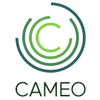
The CAMEO homepage now has a new logo and look!
We would like to thank Scott Na'auao of Welcome Stranger for his generosity in designing the new logo. Thank you!
June, 2020
The Materials Selection and Specification Working Group (MWG) at the American Institute for Conservation (AIC) is leading an effort to provide a resource bank of information that will help develop best practices in selection of materials used in the preservation, transport, and display of cultural heritage. CAMEO has been designated as the platform for the consolidated information on materials with new sets of information added under the headers: Applications, Personal Risks, Collection Risks, Environmental Risks, Working Properties, and Forms/Sizes. The ‘Additional Information’ field will contain links to the Oddy Test results residing in the AIC Wiki. The ‘Environmental Risks’ section will be populated with information developed as part of the recently funded NEH grant for Life Cycle Assessment of materials and treatments used in cultural conservation. CAMEO will also provide links to the Life Cycle Assessment tool that will enable the comparison of carbon footprints for over 3000 materials.
View: Materials Working Group Database
